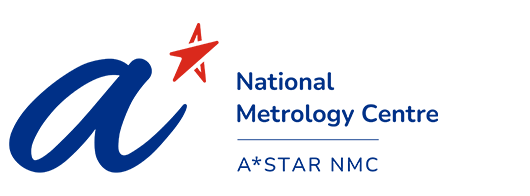TIME & FREQUENCY

INTRODUCTION
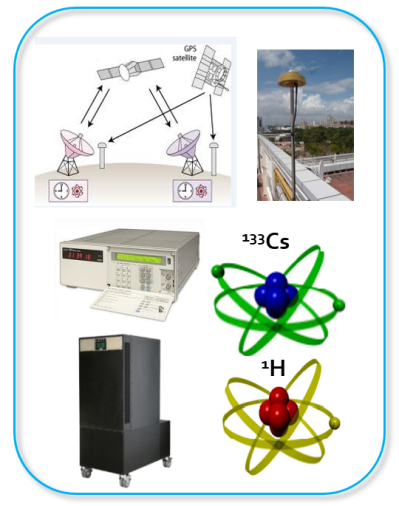
NMC is the timekeeper of Singapore Standard Time SST. Being the national time laboratory, NMC undertakes the task of generating, maintaining and disseminating the official time UTC(SG), a local realization of world standard time called coordinated universal time. The Singapore Standard Time (SST) is generated by advancing the UTC(SG) by 8 hours to account for the time zone. The UTC(SG) is derived at highest level from an ensemble of atomic clocks including one hydrogen MASER and several caesium beam frequency standards. It is disseminated to the industry by providing time & frequency related measurement standards traceable to SI units the Second. We also offer precision measurement services for user-specific systems in the area.
Accurate and reliable time is always desired on a network to computers and network devices in order to maintain order. To meet the needs of system time standardization, we provide network standard time synchronization services. Users who need precise and trustable timing information can use the NTP (network time protocol) to get standard time from our time server and synchronize.
LATEST NEWS
The time & frequency lab is expanding its precision measurement services in the following areas:
- To verify customer’s high end frequency standard remotely through GPS common view technique
- To disseminate standard time point to point for customers with security concerns
MEASUREMENT STANDARDS AND DISSEMINATION
Nowadays, the Primary Reference Standard for traceable measurement of time interval is a Caesium atomic clock. The SI definition of the second is based on extremely predictable and stable oscillations within the Caesium atom. More than 400 of these clocks are kept in around 70 National Metrology Laboratories around the globe and these clocks form the basis of Coordinated Universal Time (UTC). At present, NMC maintains a group of five caesium atomic clocks and one Hydrogen MASER atomic clock, which serves as the national reference standard for the measurement of frequency and time interval. Measurements made using this standard are traceable to UTC(SG).
TRAINING COURSES
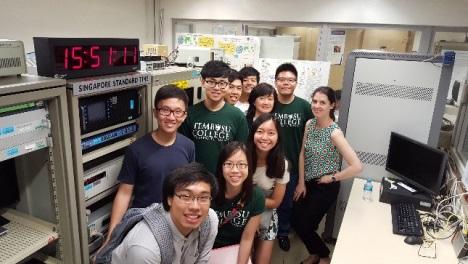
Time and Frequency Laboratory provides trainings for technical professionals and managers on the basic and advanced knowledge and skills for time and frequency measurements. These trainings aim at enhancing their measurement capabilities, and ensuring their measurement services are compliant to international standards.
In an effort to support local SMEs, we regularly hold the following courses:
- Time & Frequency Metrology
- Basis of Time & Frequency measurement
- Calibration of Frequency Counter
- Calibration of Stopwatch and Timer
International Comparisons
To align national standard time UTC(SG) with UTC and maintain their difference within tens of nanoseconds, we do international clock comparison everyday using GPS time transfer techniques. This enables us to sustain the UTC(SG) accuracy and disseminate to industry and public users.
Recently participated international comparisons:
- CCTF-K001.UTC
- APMP GPS Receiver Calibration
- APMP Stopwatch Calibration
RESEARCH PROJECTS
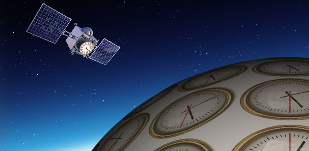
Timing is critical in many areas, like telecommunication and financial transactions. Timing and synchronization are fundamental to IP-based digital network operations as all network devices need a high accurate time/frequency reference for timing. NMC has been studying the feasibility of time/frequency dissemination with microsecond level accuracy.
In the generation of UTC, GPS has been widely used for remote and precise time transfer purpose by NMI time labs since 1980s. In order to improve the robustness and stability of the time transfer solution for a time link, time transfer via other GNSS systems can also be used. As such, the Chinese BDS (Beidou Navigation Satellite System) is selected as a new approach for this purpose. In tropical area, the BDS reception is better than the other regions in terms of number of visible BDS satellite. We are taking this advantage to evaluate the time link performance based on BDS.
INTERESTING STORIES

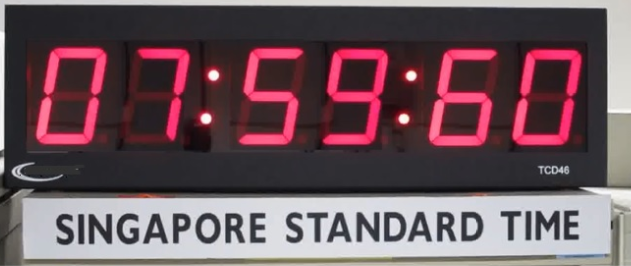
Leap Seconds
How long a second is? It depends on how long a day is, that is, the Earth's rotation period. If the Earth's rotation period is stable and strictly rotates for one revolution a day, then the world time unit of the measurement time is 1 second or 1/86400 days. However, study had found earlier that in a long run, the earth revolution is slowing down and its change is not predictable. As a result, the “world time” scale based on earth rotation is neither accurate nor reliable.
In 1967, the 13th General Conference of Weights and Measures adopted a resolution to replace the definition of the "second" based on astronomical observation by that of the atomic oscillation of caesium-133 atom. This is the “atomic time” which is relatively constant and not affected by external factors. Since then, the International Atomic Time (TAI) became the international reference time. Nowadays, the accuracy of the atomic clock can reach 1 second per 1 million years, which is a more stringent and accurate time scale standard. TAI is maintained by the Bureau International des Poids et Mesures (BIPM) based on the weighted average of the times kept by more than 400 atomic clocks in over 80 national time institutes and laboratories around the world.
However, the two time measurement systems “World time” and “International Atomic Time” would deviate over the years. To reconcile the difference, the Coordinated Universal Time (UTC) was adopted to uniformly measure time in 1971. UTC is the common time standard for civilian use, it primarily follows the atomic time, but with a leap second insertion whenever the difference between UTC and the astronomical time will exceed 0.9 seconds.
The leap second insertion is not regular, depending on the speed of the Earth's rotation. Since 1972, 27 seconds have been added to UTC. The difference between UTC and TAI is now –37s.
A*STAR celebrates International Women's Day

From groundbreaking discoveries to cutting-edge research, our researchers are empowering the next generation of female science, technology, engineering and mathematics (STEM) leaders.
Get inspired by our #WomeninSTEM
